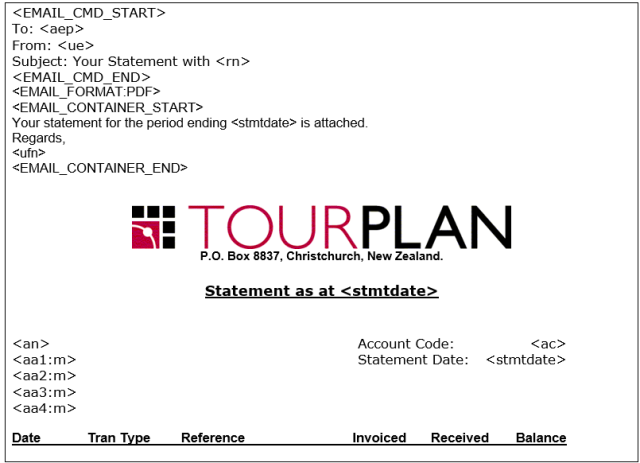
(continued from Journal Report)
Debtor Statement messages have (in addition to Setup), 4 sections to them—Header, Lines, Item Total and Tail.
Header, Lines and Tail perform the standard functions of these sections as they do in other message formats. The Item Total is designed to output the outstanding balance of each booking.
Example 109: Statement Header Format

The lines in the header in Example 109: Statement Header Format Example 109: Statement Header Formatfrom <EMAIL_CMD_START> to <EMAIL_CONTAINER_END> are Fax and Email related.
<EMAIL_CMD_START>indicates all lines until <EMAIL_CMD_END> will be passed to the email client software.
To: <aep>Standard SMTP addressing for the email recipient. Tourplan will substitute <aep> for the Agent Email address from the Phonebook.
Subject: text <rn>the subject line of the email which will be passed to the email client. Tourplan will substitute the systm Registered Company Name for <rn>.
<EMAIL_CMD_END>indicates the end of email commands.
<EMAIL_FORMAT:PDF>Indicates that the attachment is to be converted to PDF format. Not required if the message is not being sent as an attachment.
<EMAIL_CONTAINER_START>the text between this command and <EMAIL_CONTAINER_END> is the email message that the recipient receives which carries the PDF attachment. Tourplan will substitute <stmtdate> for the statement date. Not required if the message is not being sent as an attachment.
<EMAIL_CONTAINER_END>indicates the end of the container message.
|
|
The balance of the message (from <EMAIL_CONTAINER_END>) is what will be attached in PDF format to the container email. |
The following substitutions will be made in the header:
<stmtdate>Statement date.
<an>Agent/Debtor name. :m = Agent/Debtor mailing address (as opposed to (P)hysical address.
<ac>Agent code.
<aa1>/<aa4>Agent/Debtor address fileds 1–4.
Example 110: Statement Header Output
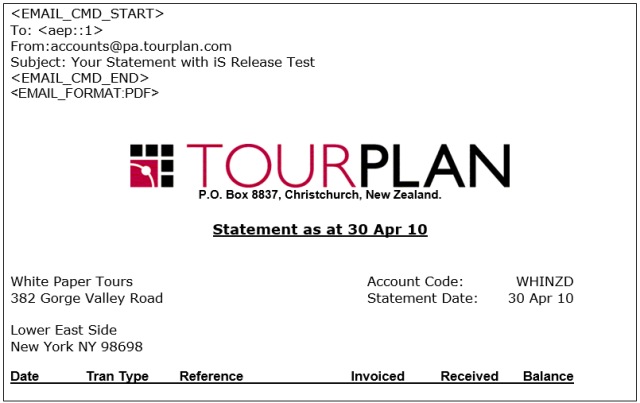
These two sections are output concurrentlly, per booking. The lines section outputs the individual transactions (Invoices/Credit Notes/Receipts) on a per booking basis and the Item Total section summarises the balance of the booking. Because they are output together, setup examples of both are shown together here.
Example 111: Statement Lines Format

The following substitutions will be made in the Lines:
<trndate>Transaction date.
<trntype>Transaction type. Invoice/Credit/Receipt. :f = Output transaction type in full—e.g., Invoice, not INV.
<trnref>Transaction reference—invoice/credit/receipt number.
<trndramt>Transaction debit amount.
<trncramt>Transaction credit amount.
Example 112: Statement Item Total Format

The following substitutions will be made in the Item Total:
<ar>Booking agent reference field.
<bn>Booking name.
<td>Booking travel date.
<br>Booking reference.
<itemtot>Item (booking) total balance.
Example 113: Statement Lines/Item Total Output
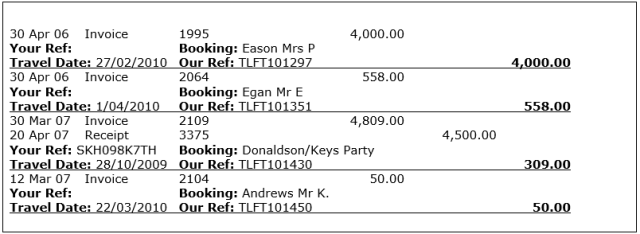
The statement tail section can output the total balance owed by the debtor. In addition, (if required) this can be broken down into overdue periods.
Example 114: Statement Tail Format
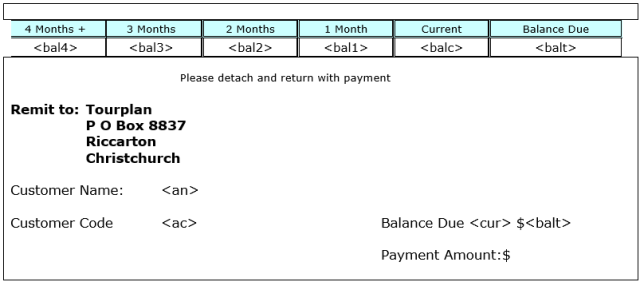
The following substitutions will be made in the Tail:
<bal4>/<bal1>Debtor balance current period -4, -3, -2, -1—i.e., overdue balances.
<balc>Debtors balance current period.
<balt>Debtors Total balance.
<an>Agent Name
<ac>Agent Code
<cur>Balance currency
Example 115: Statement Tail Output
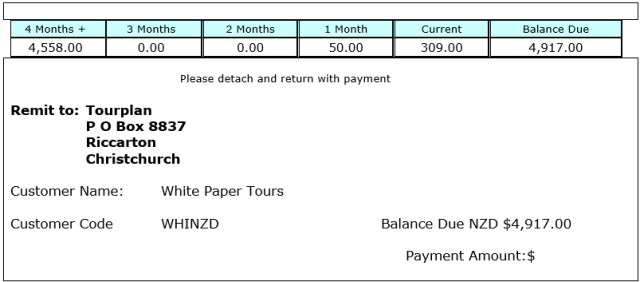
Example 116: Complete Statement Output
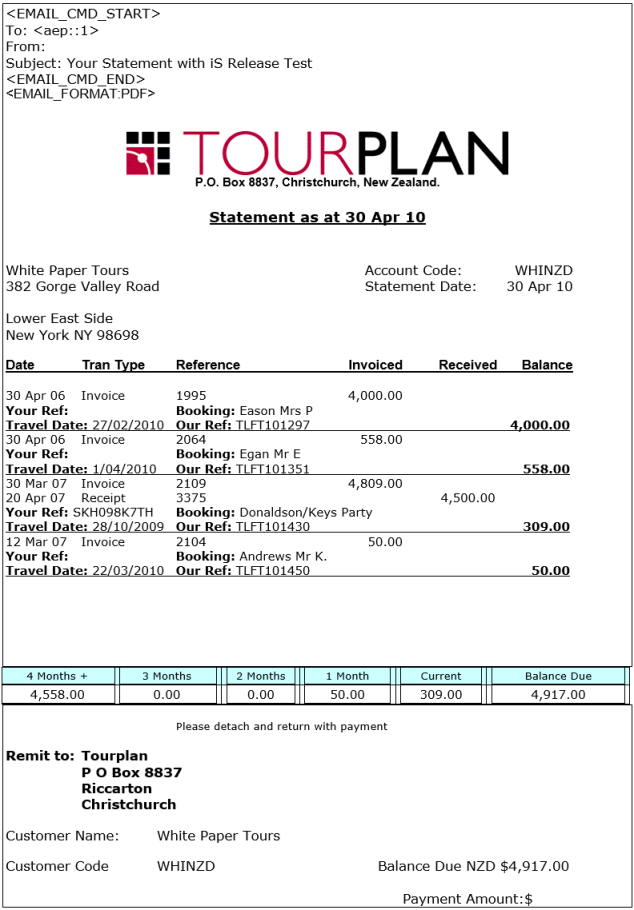
(continued in EFT File Format)